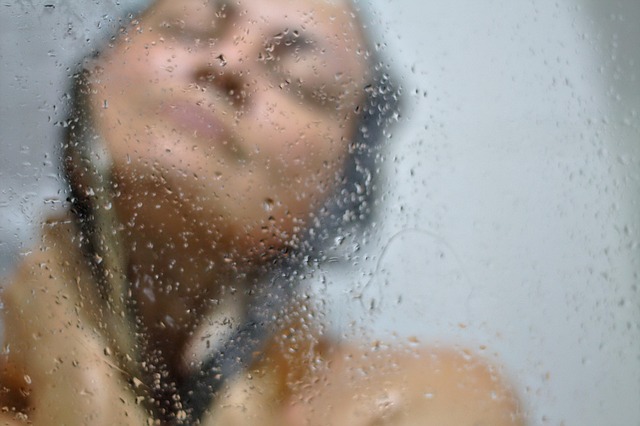Contrast bath therapy uses hot and cold water immersions to stimulate blood flow, reduce inflammation, and speed muscle recovery for athletes. Soak alternately in hot (105°F/40°C) and cold (59°F/15°C) water for 30s-1m, repeating several times, post-workout or event, 3-4 times weekly.
Contrast baths, an ancient practice, have gained modern popularity as a powerful tool for athletes seeking enhanced performance and faster recovery. This therapeutic technique involves alternating between hot and cold temperatures, stimulating various physiological responses in the body. By understanding the science behind contrast bath therapy for recovery, athletes can unlock improved muscle regeneration, reduced inflammation, and enhanced blood flow, ultimately leading to better physical performance and faster return to training.
Understanding Contrast Bath Therapy
Contrast bath therapy involves alternating between hot and cold water, which can significantly benefit athletic performance and recovery. This technique takes advantage of the body’s response to temperature changes. When you immerse yourself in a contrast bath, your arteries dilate (widen) in response to the heat, increasing blood flow and oxygen delivery to muscles. As you switch to cold water, the arteries constrict (narrow), reducing blood flow and helping to remove metabolic waste products like lactic acid that can cause muscle soreness.
This process not only improves circulation but also enhances the body’s natural anti-inflammatory response, which is crucial for recovery after intense workouts or competitive events. By accelerating the removal of harmful substances from muscles and speeding up the delivery of oxygen and nutrients, contrast bath therapy can significantly reduce recovery time and improve overall athletic performance.
Mechanisms Behind Enhanced Recovery
Contrast baths, an ancient practice, have gained modern popularity due to their remarkable benefits on athletic performance and recovery. The mechanism behind this enhanced recovery lies in the dual nature of temperature exposure. Extreme temperatures—from hot to cold—prompt a series of physiological responses. Firstly, hot water vasodilation increases blood flow, enhancing nutrient delivery to tired muscles while flushing out metabolic waste products. Conversely, cold water constriction follows, reducing inflammation and minimizing muscle spasms. This contrast stimulates the release of endorphins, the body’s natural painkillers, providing a sense of relaxation and reduced discomfort.
Moreover, contrast baths can activate the parasympathetic nervous system, promoting a state of calm and encouraging deeper, more restorative sleep. This, in turn, accelerates muscle repair and regenerates energy stores, crucial for athletes aiming to perform at their peak and recover efficiently between training sessions. Thus, incorporating contrast bath therapy into post-workout routines offers a simple yet powerful tool to optimize athletic performance and overall recovery.
Benefits for Athletic Performance
Contrast bath therapy, involving alternating between hot and cold water, has gained significant attention in athletic circles as a powerful tool to enhance performance and aid in recovery. The science behind it lies in its ability to stimulate blood flow, which can significantly benefit athletes. When you immerse yourself in hot water, your arteries dilate, increasing blood circulation and oxygen delivery to muscles. This enhanced oxygenation promotes muscle repair and growth, leading to improved athletic performance.
Following this, a quick switch to cold water triggers vasoconstriction, narrowing the blood vessels and reducing blood flow to the extremities. This phase helps flush out metabolic waste products like lactic acid that build up during intense exercise. By removing these byproducts, contrast baths can alleviate muscle soreness and reduce inflammation, ensuring athletes are ready for their next training session or competition.
Practical Implementation and Tips
Implementing contrast baths into your athletic routine is easier than you might think. Start by preparing two containers filled with water—one with hot water (around 105°F or 40°C) and another with cold water (approximately 59°F or 15°C). The temperature difference should be significant but bearable. Step into the bath, alternating between soaking in the hot water for 30 seconds to a minute, then quickly moving to the cold water for an equal duration. Repeat this cycle several times, ensuring your body has time to adjust.
For optimal contrast bath therapy for recovery, consider timing and consistency. Perform these baths after intense workouts or competitive events. Aim for regular sessions, such as three to four times a week, to support muscle repair and reduce inflammation. Remember, proper hydration is also key; drink plenty of water before, during, and after your contrast bath to optimize its benefits.
Contrast bath therapy for recovery has emerged as a powerful tool in the athletic world, offering numerous benefits beyond mere relaxation. By understanding the mechanisms behind enhanced recovery, athletes can leverage this simple yet effective technique to improve performance and speed up post-exercise recovery. Practical implementation tips make it accessible for everyone, making contrast baths an affordable and convenient way to maintain peak physical condition. Incorporate this therapy into your routine to experience its positive impact on athletic performance and overall well-being.
